How to strip paint from wood – to refresh the surface without damage
Expert tips to help you refresh any wooden surface without damaging it, whether for a new coat or color, or to expose the grain

Sarah Warwick
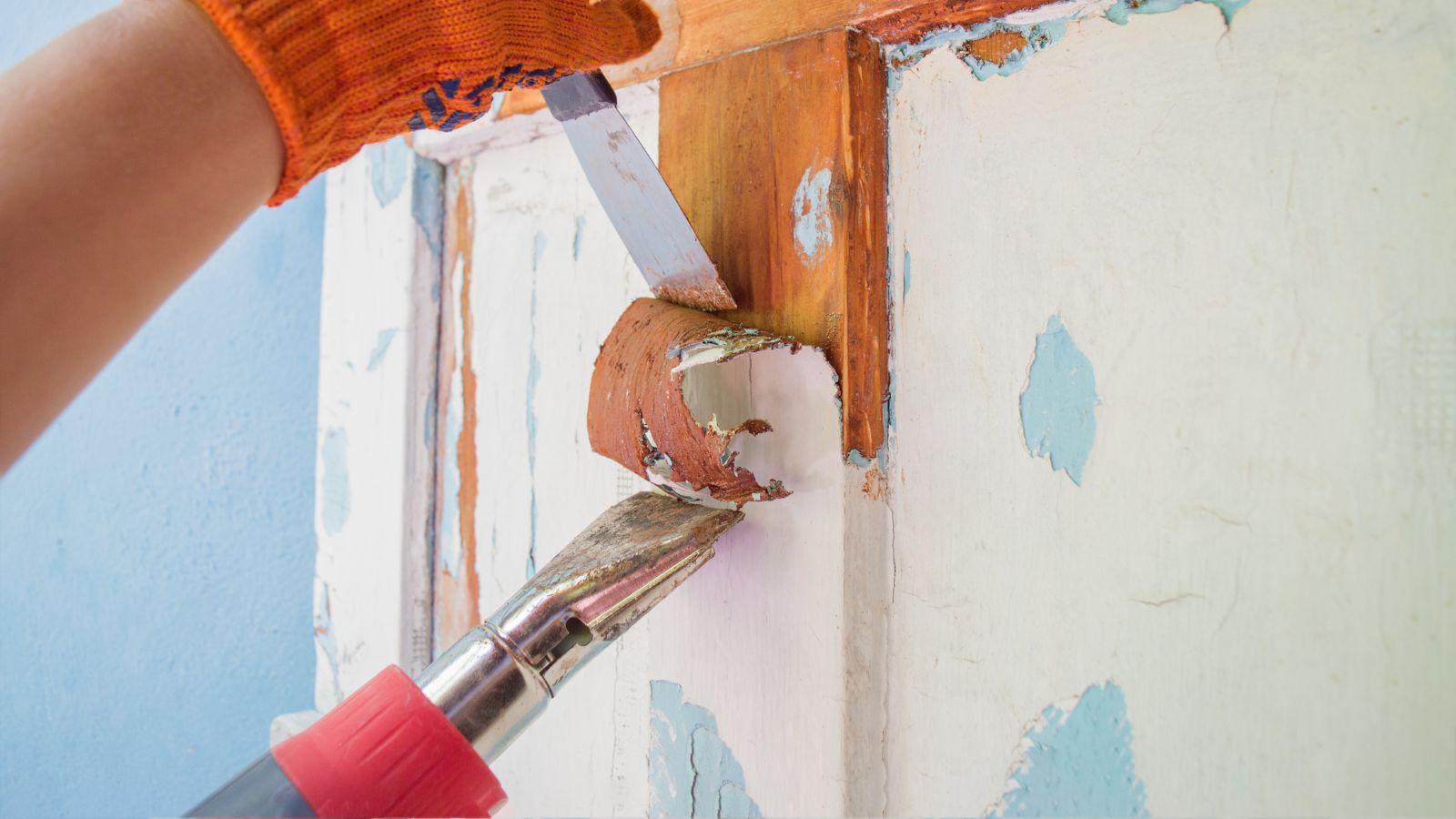
There will inevitably come a time when you need to know how to strip paint from wood. You might have to do so to restore wood furniture because the original paint has become flaky or discolored, to upgrade your painted furniture ideas by painting wood furniture with a new hue, or perhaps because you want to expose the wood below.
There are many ways to strip paint from wood, but some are more effective than others, depending on the type of wood and the type of paint used. Whether you aim to strip your best wooden outdoor furniture or structural features in your home, carrying out the task the way the experts do is a must to avoid damage to the wood and yield the best results.
To make achieving all these goals easy, we’ve put together an essential guide to strip wooden furniture safely, including three methods experts recommend and how to choose the best one for your project.
How to strip paint from wood
When you’re looking for the answer to how to strip paint from wood, there are actually three alternatives. Sanding, a hot air gun, and chemical stripping are all options. Each of these methods has its strengths, and its downsides, which you’ll want to take into account.
‘Bear in mind that in the end combining methods can be best,’ says Lucy Searle, content director of Homes & Gardens.
1. Determine the best method

Andriy Boyko, a handyman and owner of A.O. Handy Inc says, 'There's no single "best" way to strip paint from wood. The best method depends on several factors, including:
'Type of paint: Knowing what kind of paint you're dealing with (latex, oil, lacquer, etc.) will help you choose the most effective stripper. Oil-based strippers are generally stronger but have harsher fumes, while citrus strippers are better for latex and have a lower odor.
Design expertise in your inbox – from inspiring decorating ideas and beautiful celebrity homes to practical gardening advice and shopping round-ups.
'Amount of paint: Heavily layered paint might require a different strategy than a thin coat. Chemical strippers are good for multiple layers while sanding might be sufficient for thin layers.
'Wood type: Softer woods like pine are more susceptible to damage from sanding or harsh chemicals. Opt for gentler methods or choose a stripper specifically formulated for delicate surfaces.
'Project size and detail: Chemical strippers are efficient for large areas while sanding or heat guns are better for detailed areas or intricate moldings.'
The different options to strip paint from wood are:
Using a heat gun
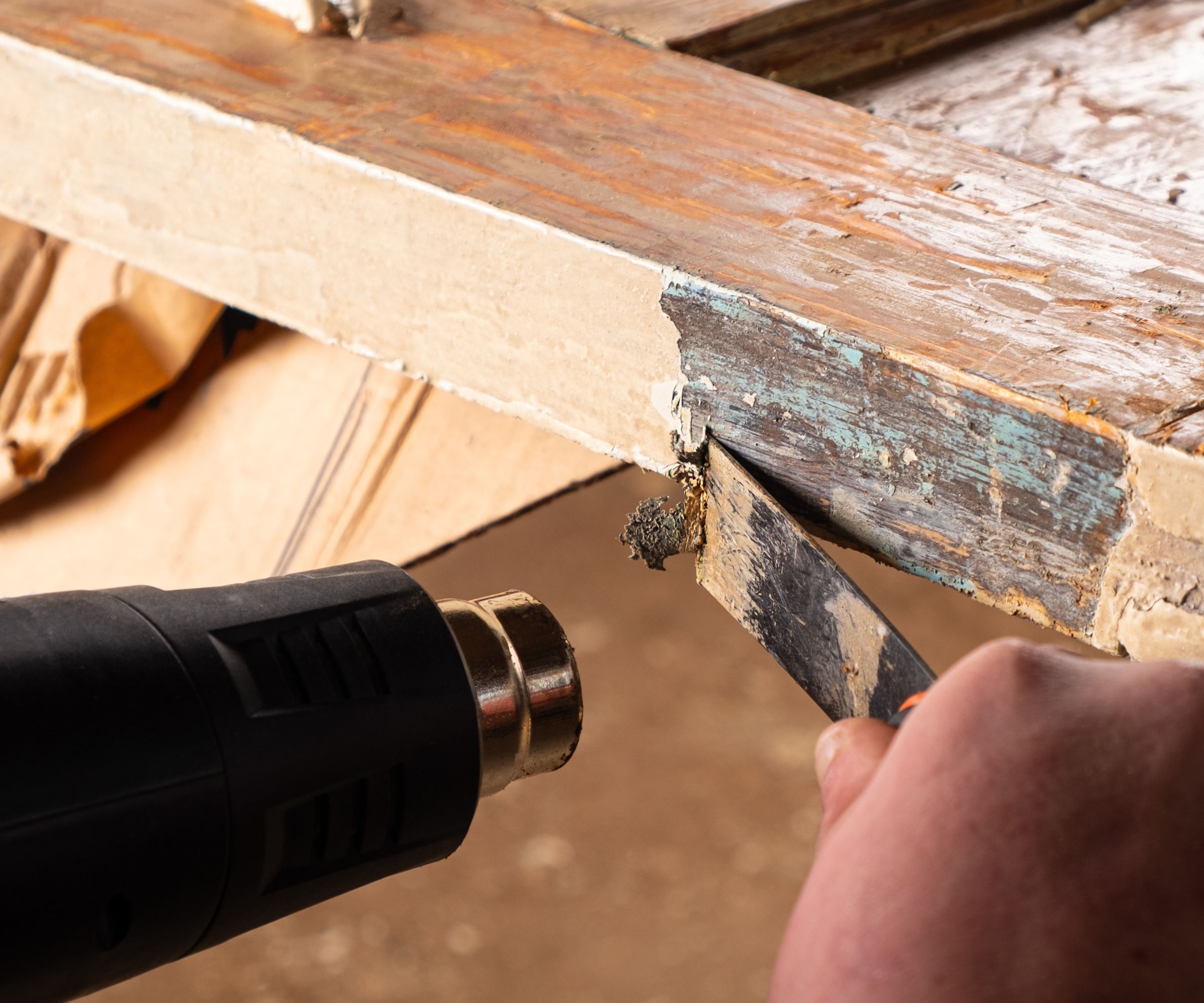
A heat gun can be an effective way to strip paint from wood. It softens the paint so it can be scraped off.
'Heat guns can be especially useful in cases where you're trying to get through several thick layers of paint,' explains Andre Kazimierski, CEO of Improovy Painters. 'Latex paint is the easiest to remove using this method since it will easily melt after being exposed to a heat gun.'
Make sure to wear eye protection and heat-resistant gloves when using a heat gun.
Move the gun backward and forward over the paint being careful not to concentrate the heat in one area, which can scorch the wood. It only takes seconds for the paint to soften, and you can then use a scraper with a broad blade to lift it. For safe working, be sure to move the scaper away from you and avoid placing your hand so the paint – which will of course be hot – falls on it.
Pros: This method is a fast way of removing paint from large areas. It's effective on stubborn paint and good for removing multiple layers.
Cons: With this method, you run a high risk of scorching wood if you're not careful, and can release harmful fumes from burning paint. If you do not feel confident handling the heat gun, this method might not be for you.
SEEKONE Heat Gun | $28.99 from Amazon
This heat gun has an adjustable temperature control, so you can make adjustments according to the type and sensitivity of the wood you are working on and the amount of paint you are removing. It comes with four different nozzles, offering you flexibility.
Sanding
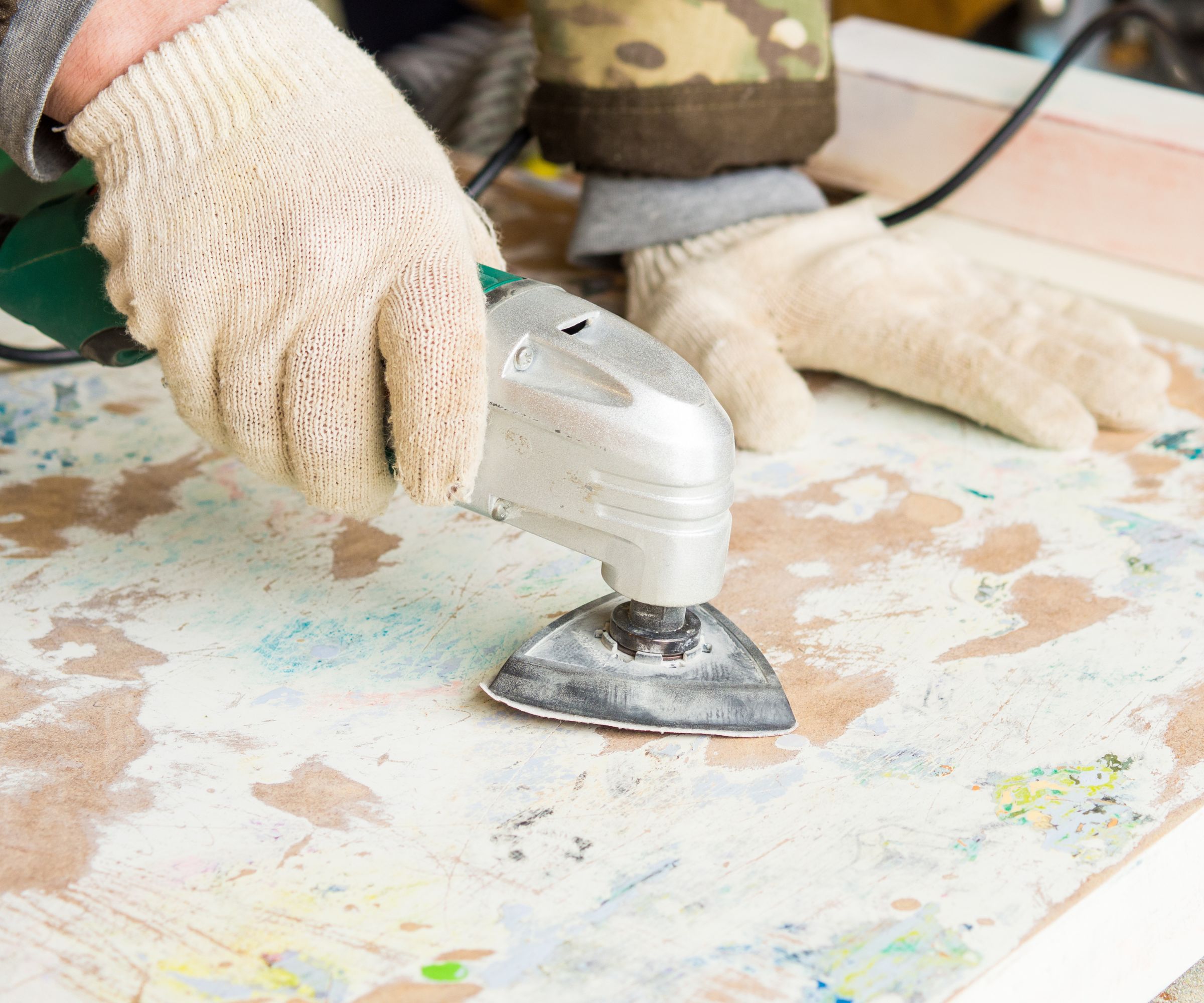
Sanding can be the best way to strip small areas of paint from wood.
For detailed spots, use sandpaper and a sanding block, like this Warner sanding block from Amazon, and to efficiently remove paint from large flat surfaces, use a power sander, from Amazon. Choose the appropriate grit sandpaper; use coarse grits (60-80) for removing thick layers of paint and finer grits (120-220) for delicate surfaces.
Wear eye protection and a dust mask when you’re sanding and never sand lead-based paint.
Sand the painted surface using even, overlapping strokes, or, if you are using a power sander, use a back-and-forth motion, keeping it flat against the surface to avoid creating uneven patches.
After sanding outdoor furniture or other wood surfaces, wipe it clean, removing any dust, before making preparations for repainting.
Pros: Sanding is more controllable and less messy than other methods. It is good for small areas or delicate surfaces.
Cons: Sanding off paint can be labor-intensive, time-consuming, and not ideal for large areas, especially if you aren't using a power sander. It generates a lot of dust, so it may not be ideal for indoor areas with maximalist decor, as the space will need a full dusting cleaning after you've finished. Of course, you can invest in dust sheets, such as these canvas drop cloth covers from Walmart.
Applying paint strippers

'Chemical strippers are one of the most popular methods and work well on virtually all paint types,' says Andre Kazimierski. They work by dissolving paint and can come as liquids, gels, or pastes.
Always read the instructions on the product before use, and wear safety gloves, goggles, and a respirator, from Amazon, when using chemical strippers on wood.
‘Use a gel or a paste for a vertical surface,’ recommends Lucy Searle. ‘They’re preferable as they won’t run onto the floor.’
Apply liquid paint stripper using an old paintbrush, according to instructions, then remove the paint using a scraper, working away from yourself.
After using a chemical stripper, neutralize the surface with a rag dampened with the recommended solvent as directed by the manufacturer (usually mineral spirits).
Failing to follow the manufacturer's directions for chemical strippers can potentially damage wood, so you'll need to use these products with caution. 'When it comes to stripping paint from wood, you need to be very careful not to damage the wood due to prolonged exposure to the paint-stripping chemicals,' warns Clare Jackson, the founder and managing director of Wooden Furniture Store. 'You also need to know what wood you are working with to ensure it won't be damaged using this method.'
Pros: Paint strippers efficient for large areas, to remove multiple paint layers, and
good for detailed areas with a gel formula.
Paint strippers are useful to remove paint thoroughly which is particularly important if you’re going to varnish it down the line. They’re also good for window frames as you don’t have to worry about heat cracking the glass, as well as for other awkward paint-stripping tasks.
Cons: On the downside, using strippers can be slow, and the space in which they’re used needs to be well-ventilated because of their harsh fumes. It can also damage wood if not used correctly and can be messy.
If you’re stripping paint from a piece of furniture or a door that can be taken off the hinges and removed, work in a garage.
2. Follow safety procedures

Before you begin stripping paint from wood, be aware of the possibility of lead being present in old paint. ‘If your home was built before 1978, it is more likely to have lead-based paint,’ according to the EPA. ‘In 1978, the federal government banned consumer uses of lead-based paint, but some states banned it even earlier.’
The bottom line? ‘Lead paint is still present in millions of homes, sometimes under layers of newer paint,’ says the EPA. Toxic lead dust can be created when the painted surface is disturbed, so always check before beginning work.
DIY tests are available, such as Lead Check, or you can send paint chips to a lab for testing; the EPA recommends consulting a lead-safe certified contractor before beginning work.
Additionally, be sure to wear safety gloves, eye protection, and a respirator where necessary. Ensure proper ventilation in the workspace.
3. Test in an inconspicuous area
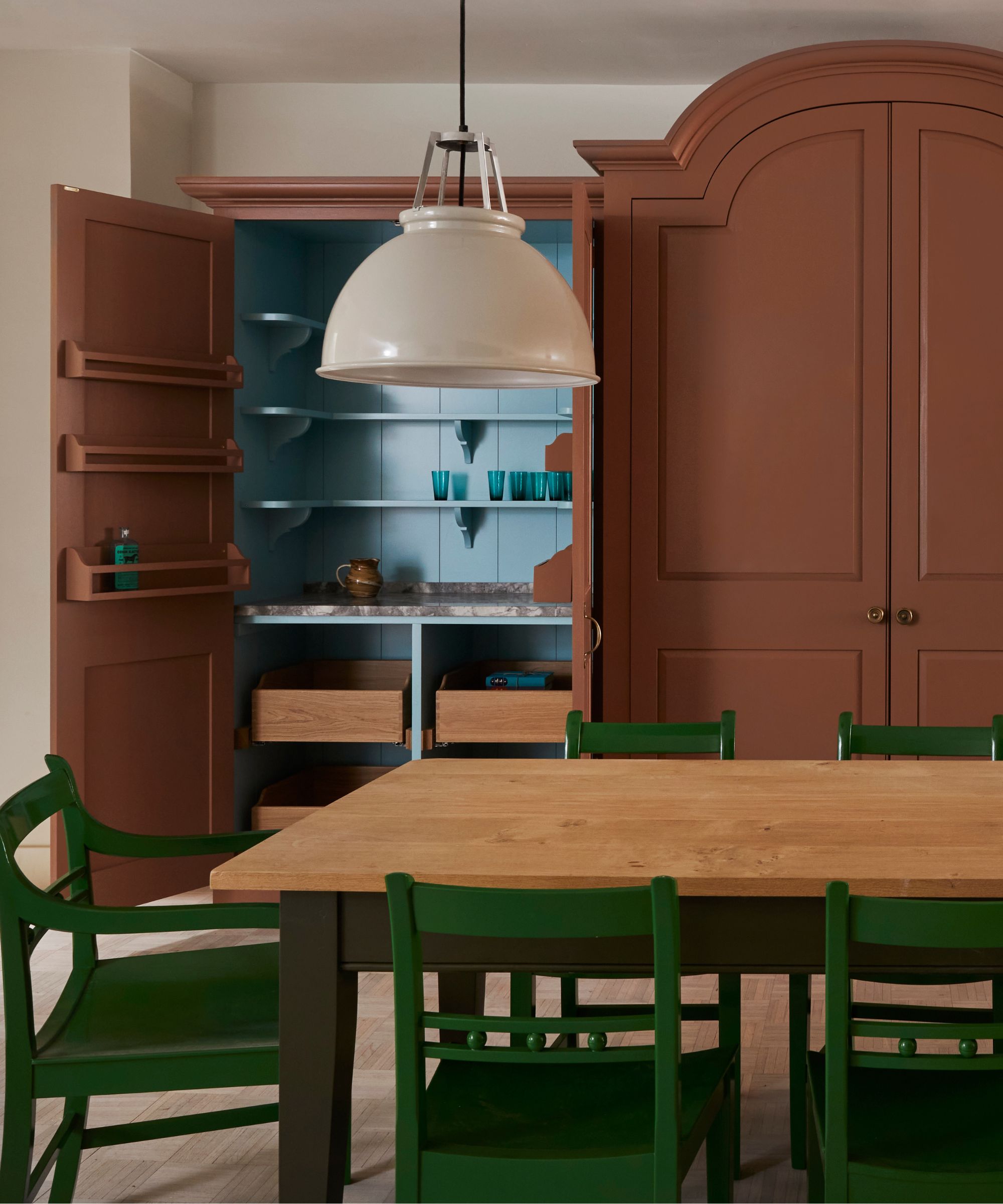
If you are unsure whether the method you've chosen to stip wood will damage the surface, conduct a spot check on a small, out-of-sight area before proceeding with this project. This test will provide a good insight into the compatibility of this method with the wood and help ensure that you achieve the desired results without causing any harm.
The indicators that suggest the test patch has caused harm to the wood include unexpected texture changes, color alterations, and signs of damage, like cracking, splitting, or splintering.
4. Work in sections
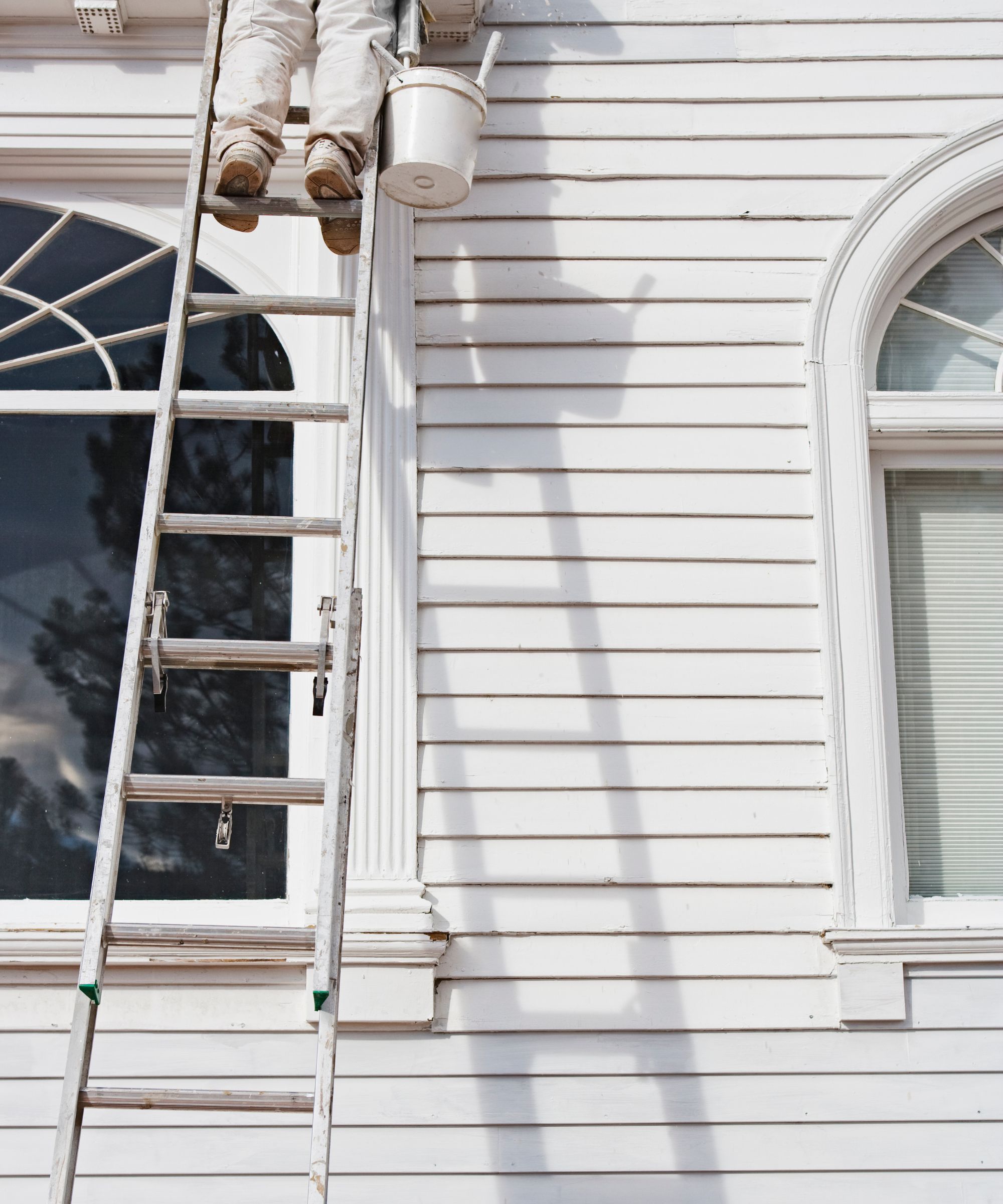
'Apply stripper or sanding in manageable sections to remove paint effectively,' recommends Andriy Boyko. This ensures even coverage to produce consistent results, allows for more controlled application, and so you can minor the stripping or sanding to avoid damaging the underlying surface.
5. Dispose of paint chips properly

Let dried paint chips dry completely before disposing in a sealed trash can.
Knowing how to dispose of paint properly is essential to reducing environmental contamination and compiling with regulations for responsible waste management.
FAQs
What is the fastest way to remove paint from wood?
The fastest way to remove paint from wood might be to use a heat gun but sometimes a combination of heat and chemicals is needed to get the results you need.
‘For speed, and if the item is removable, you might want to send it out to a pro who can put it into a dip tank,’ says Lucy Searle, global editor in chief of Homes & Gardens. ‘Immersing the item in paint stripper gives fast and thorough results.’
Will vinegar take paint off wood?
Vinegar won’t take paint off wood but it can soften it making it easy to scrape off. We’re really talking paint splashes on a floor here, though, or spatters on furniture and it’s not a replacement for other methods.
However, Clare Jackson recommends, 'If you are removing paint from softwood, you can use vinegar in a spray bottle and spray it onto the paint to soften it. Thereafter you can go with a scraper and easily remove the paint. Wipe down the area when you're done.
'For hardwood, it is better to use thinners or paint strippers.' If you’re looking for a paint stripper without strong fumes, we like Citristrip Paint & Varnish Stripping Gel – although, as the name suggests, it does have an odor.
Ultimately, the best way to strip paint from wood depends on your specific project. Consider the factors mentioned above and choose the method that best suits your project type and comfort level. If you're unsure or have a particularly delicate or valuable piece, it might be best to consult with a professional restoration specialist.

Lola Houlton is a news writer for Homes & Gardens. She has been writing content for Future PLC for the past six years, in particular Homes & Gardens, Real Homes and GardeningEtc. She writes on a broad range of subjects, including practical household advice, recipe articles, and product reviews, working closely with experts in their fields to cover everything from heating to home organization through to house plants. Lola is a graduate, who completed her degree in Psychology at the University of Sussex. She has also spent some time working at the BBC.
- Sarah WarwickContributing Editor
